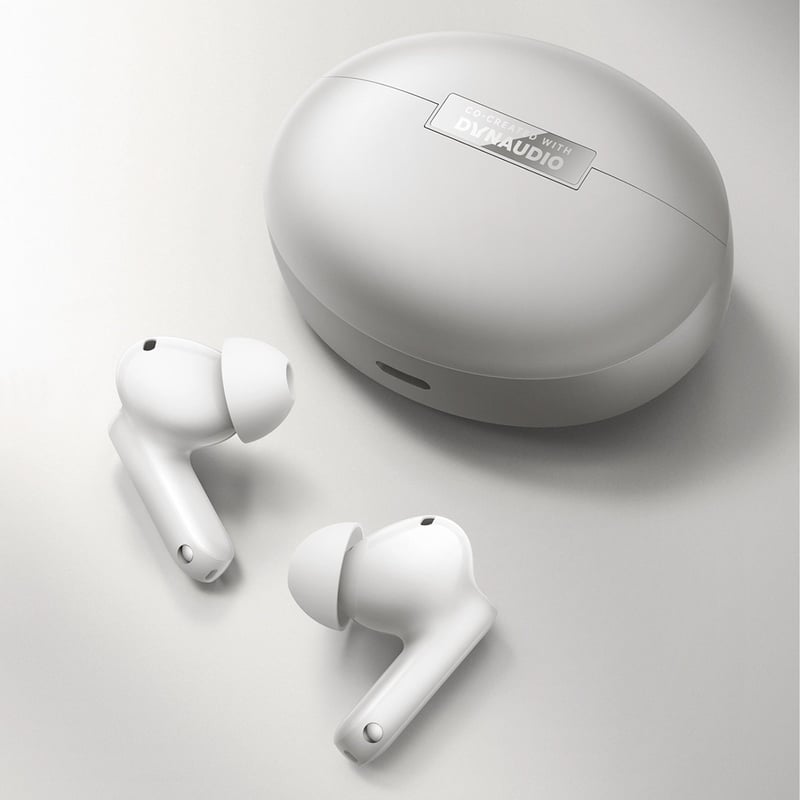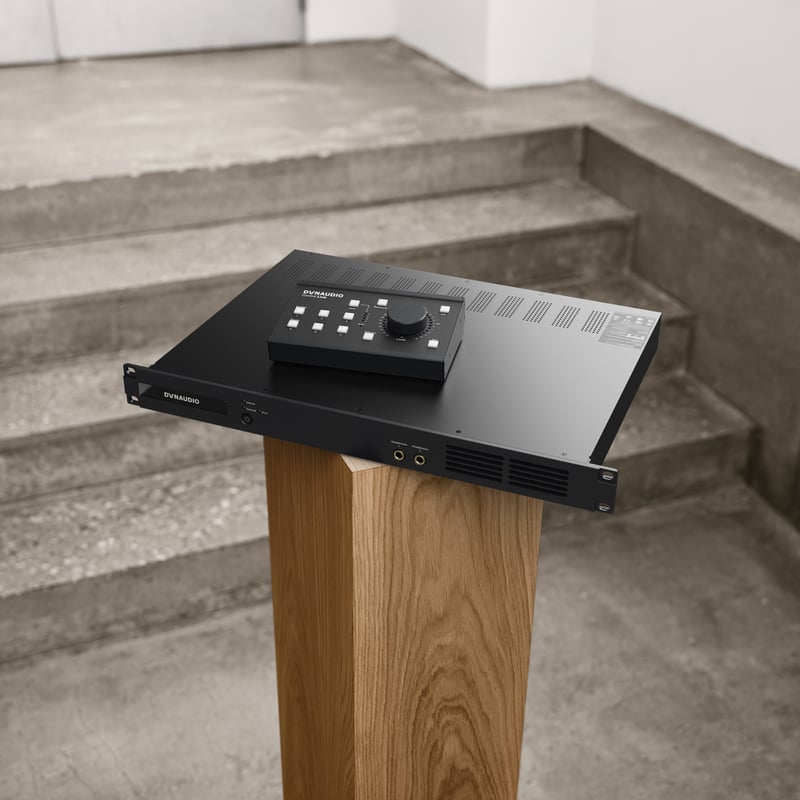The Bookshelf’s cabinet was built by humans in the beautiful Gifu area in Japan. It’s constructed from custom-made, hand-laminated engineered wood and finished with astonishing care before making its way to Denmark.
- Home
- >
- Home Audio
- >
- The Bookshelf
- Home
- >
- Home Audio
- >
- The Bookshelf
The Bookshelf
Natural harmony
There’s a kind of beautiful alchemy between Denmark and Japan. We’re half a world apart, but we share the same obsession with meticulous craft and honest simplicity. There’s even a word for it: ‘Japandi’.
The Bookshelf blends Denmark’s world-famous, no-nonsense design and Japan’s incredible skill with precision woodcraft techniques.
This exclusive premium loudspeaker comes from a three-cornered partnership. It’s designed by the award-winning Keiji Ashizawa studio in Tokyo. The artisans at Karimoku make the cabinets using traditional techniques on sustainable oak from Japan’s beautiful Hokkaido area. And it’s assembled, fitted with cutting-edge audio technology, and lovingly tuned to acoustic marvellousness at Dynaudio headquarters in Denmark.

Going against the grain
Making a speaker like this isn’t easy. Especially when you decide to explore new materials, as well as (some might say) radical design ideas. At the same time. And still have it sound like a quintessential Dynaudio speaker.
If you were to cut the speaker neatly in half (which we wouldn’t recommend, but which you are of course free to do if you want to void your warranty), you won’t see MDF. Instead you’ll see one of Karimoku’s hallmarks: bespoke engineered wood. It’s a technique the company has developed for its super-high-end furniture, and it’s created this version specifically for The Bookshelf.
Karimoku has a motto: ‘High-tech, high-touch’. It uses technology to enhance precision in processing, and then relies on skilled artisans to finish things off. The result: a cabinet that’s as much a high-end living-room essential as it is a piece of cutting-edge sonic artistry.

Intelligent design
It isn’t easy to design a speaker like this, either. Especially if – like our good friend Keiji Ashizawa – your usual comfort-zone is designing high-end homes, furniture and hotels. He isn’t wrong when he says that “simple things are quite difficult to make”. Every detail has to be perfect. Every line, corner, chamfer and radius carefully considered. Then altered. Then considered some more.
The goal was to create a shape that people not only love the look of – but one they want to touch. A simple, yet ‘kawaii’ look. It works as a speaker design, of course – but also as a piece of furniture.
The prominent ‘shelf’ on the top. The seamless way the curves blend in and carry that distinctive ridge to cascade down the front of the cabinet. The utter simplicity of the two black drivers on the front, and the minimalist terminals around the back.
Tell us you don’t want to reach out and run your hand around those lines before you play your favourite music, and we simply won’t believe you…

Calling the tune
Making it is difficult. Designing it was difficult. Tuning? Also decidedly not-easy. Those high-design details created some challenges for our engineers – and the cabinet construction meant that we had to find some ingenious solutions for internal bracing and support (including foam under specific compression that pushes back on the inside of the cabinet). Still, our team aren’t truly content unless they’re scratching their heads…
It’s a good thing, then, that they were starting out with top-shelf components. High frequencies are handled by the Esotar 3 – our 28mm soft-dome tweeter with Hexis inner dome, that’s fast becoming a legend since its introduction in 2018. You might notice that it’s fronted by a hefty solid aluminium faceplate: no screws, and reminiscent of the classic Dynaudio T330 design.
Midrange and bass come courtesy of a tweaked Confidence 20 driver: an 18cm NeoTec MSP unit with an aluminium voice coil, glass-fibre voice-coil former, high-power neodymium magnet system and innovative venting system for maximum performance.
The crossover is bespoke: months of iterative testing, listening, measuring and modification have addressed directivity, diffraction and reflection puzzles. Combined with millimetre-perfect port tuning using our sophisticated dual-flared design, our team found the ideal blend for the ideal sound.
As one put it, it’s the speaker that makes him smile the most. Because it’s a true Dynaudio.
We hope it’ll make you smile, too.



Features
Japanese craftsmanship
Danish sound-tuning
Months of work went into listening, measuring, tweaking and honing The Bookshelf’s performance. Tiny modifications to the crossover, cabinet construction and even the foam that doubles as bracing have paid off with incredible sound.
Designed in Tokyo
The Bookshelf was designed by Award-winning architect Keiji Ashizawa in Tokyo. He and his team set out to create a tactile piece that displays the perfect balance of form and function. A radical-yet-friendly design, we think you’ll agree.
Specifications
- Status Current
- Segment Home
- Series The Bookshelf
- Type Bookshelf
- Sensitivity (dB @ 2.83V/1m) 86
- IEC Power Handling (W) 180
- Rated Impedance (Ohm) 4
- Box Principle Bass reflex rear ported
- Crossover 2-way
- Crossover Frequency (Hz) 2700Hz
- Crossover Topology 1st / 2nd order
- Tweeter 28mm Esotar 3
- Woofer 18cm MSP cone
- Weight kg 9.72
- Weight lbs 21.5
- Width mm 222
- Height mm 405
- Depth mm 300
- Width mm incl. feet/grill/stand 390
- Height mm incl. feet/grill/stand 1000
- Depth mm incl. feet/grill/stand 360
- Packaged Width mm 377
- Packaged Height mm 444
- Packaged Depth mm 512

The Bookshelf
Specifications
Want to know more?
Downloads & links
Dynaudio Magazine
Dynaudio Magazine is our universe of sound and music-related articles, videos, and podcasts, covering everything from loudspeakers and technology to extraordinary people, and our very best tips and tricks.

Dynaudio teams-up with OPPO for Enco X3s earbuds
We're thrilled to announce the release of OPPO's Enco X3s true wireless noise cancelling earbuds, with Dynaudio sound tuning.

Why are there holes in our speaker drivers?
On this episode of Ask The Expert, Otto explains why our speaker cones have small, rectangular slots around the central dome. Far from being a random ...

Dynaudio Control series
We are pleased to introduce the Dynaudio Control series: a suite of next-generation audio tools engineered to serve as the central monitor controller ...







